#victorina
Photo

О нет, кажется, Нина плохо влияет на его ученика!
В будущем им удалось прийти к компромиссному термину Хозяйка, но насчет обозначения себя Каины так и не договорились. Хэдканоню, что часть магических знаний, которые Виктор и Нина передали дочери состояла из бессмысленных, но атмосферных штук, несмотря на то, что Симону это не нравилось:
- Мария, а почему свечи должны быть обязательно черными?
- Мама сказала, что это самая важная деталь! Не задавай глупые вопросы.
#pathologic#simon kain#victor kain#nina kaina#victorina#мор утопия#симон каин#виктор каин#нина каина#my art
18 notes
·
View notes
Photo

□■□ 令和3年度天皇杯・皇后杯全日本選手権大会 Dec.11(Sat),2021 NECレッドロケッツ VS ヴィクトリーナ姫路 高崎アリーナ(群馬県高崎市) □■□ ヴィクトリーナ姫路 (Victorina Himeji) #5:長野 有紗 (Arisa Nagano) : Middle blocker □■□ #ヴィクトリーナ姫路 #victorina #兵庫 県 #姫路 市 #加西 市 #himeji 宍粟市 #丸の内 #長野有紗 選手 #ArisaNagano #神奈川 県 出身 #排球 #バレー #バレー部 #ハイキュー #バレーボール #バレーボール部 #vリーグ #vリーグ女子 #vリーグはバレーだよ #火の鳥NIPPON #vleague #volleyballgirls #スポーツ #アスリート #ポートレート #ポートレート好きな人と繋がりたい #東京カメラ部 #ファインダー越しの私の世界 #写真好きな人と繋がりたい #写真撮ってる人と繋がりたい □■□ (at Takasaki Arena) https://www.instagram.com/p/CeLSuFVvprT/?igshid=NGJjMDIxMWI=
#ヴィクトリーナ姫路#victorina#兵庫#姫路#加西#himeji#丸の内#長野有紗#arisanagano#神奈川#排球#バレー#バレー部#ハイキュー#バレーボール#バレーボール部#vリーグ#vリーグ女子#vリーグはバレーだよ#火の鳥nippon#vleague#volleyballgirls#スポーツ#アスリート#ポートレート#ポートレート好きな人と繋がりたい#東京カメラ部#ファインダー越しの私の世界#写真好きな人と繋がりたい#写真撮ってる人と繋がりたい
3 notes
·
View notes
Text

Arisa Nagano (Victorina Himeji)
12 notes
·
View notes
Photo

Victorina Durán (deceased)
Gender: Female
Sexuality: Lesbian
DOB: 11 December 1899
RIP: 10 December 1993
Ethnicity: White - Spanish
Occupation: Set and costume designer, artist
#Victorina Durán#Victorina Duran#lesbian history#lesbianism#lgbtq#female#lesbian#1899#rip#historical#white#spanish#designer#costume designer#artist
71 notes
·
View notes
Text

Victorina Sagboni. Paisagem. Landscape.
Викторина Сагбони. Пейзаж.
6 notes
·
View notes
Text
don tiburcio got tired of doña victorina and left and brought their parrot and 2 dogs w him, an icon
#forget the fact he faked his medical degree#also paulita making fun of victorina is so FUNNY#rambles#el fili lb
4 notes
·
View notes
Text
Victorina is musical Elphaba and Maven is book Elphaba send tweet
2 notes
·
View notes
Photo
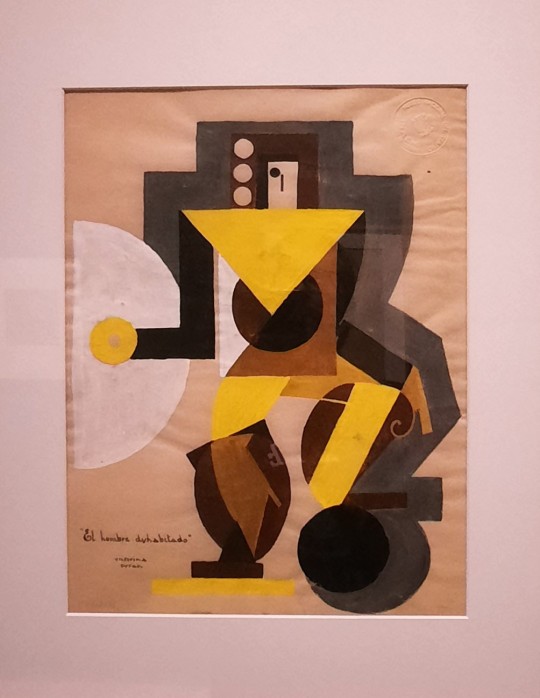
Victorina Durán: Figurino para El hombre deshabitado, de Rafael Alberti (ca. 1931)
0 notes
Text
ALL of La Fayette’s Grandchildren
(This post discusses the death and loss of children)
While four children are still pretty easy to keep track of, La Fayette’s abundance of grandchildren can be quite confusing. You often see the following graphic, published in Jules Germain Cloquet’s book:
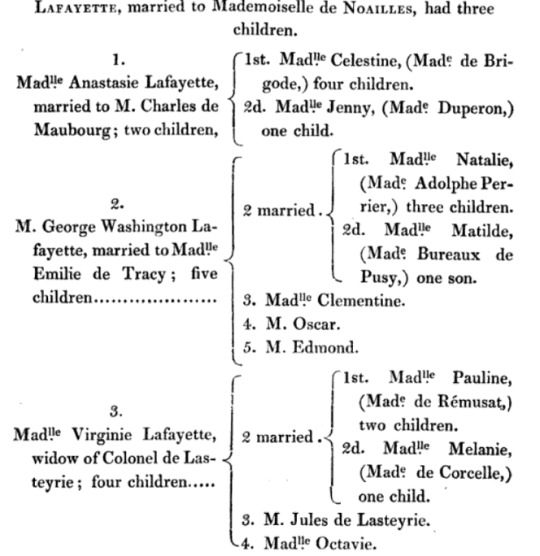
Jules Germain Cloquet, Recollections of the Private Life of General Lafayette, Baldwin and Cradock, London, 1835, p. 227.
All fine and dandy, but I was looking for more detailed information and I wanted to include the children that had already died by the time Cloquet publishes his book – I therefor made a graphic of my own. :-)
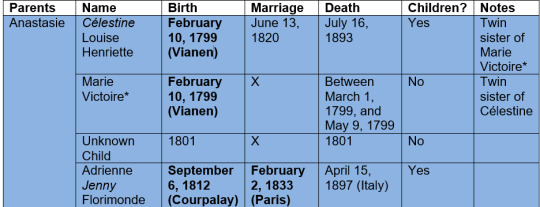
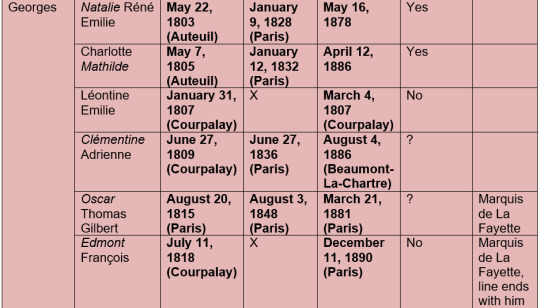
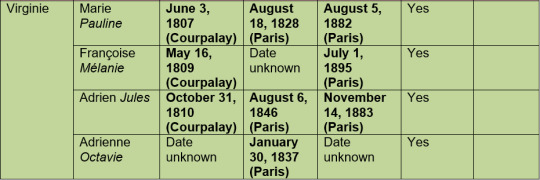
I am tempted to make one for the great-grandchildren as well, since La Fayette was very exited to become a Great-Grandfather – but this one was already a wild ride and La Fayette had more great-grandchildren then grand-children, let me tell you.
Anyway, some names are written in italics, these are the names the individuals commonly went by. I find it funny to see that all of Virginie’s children went by their second name, just like Virginie herself mostly just used her second name. Anastasie’s second child has an Asterix to her name. I have only once seen the name spelled out, on the certificate of baptism. The twins were baptized in Vianen (modern day Netherlands) and the name on the document was the Germanic spelling “Maria Victorina” – I used what I assumed is the best French spelling of the name.
The dates in bold indicate that the corresponding documentation of the birth/marriage/death can be found in the archives.
Anastasie and Charles: Finding Célestine’s dead twin sister was actually a surprise for me since I have never before seen her being mentioned. Anastasie gave birth for the first time in a town near Utrecht in what today are the Netherlands. The achieves there still have the certificate of baptism (on February 30, was the clerk sloppy or did the region in 1799 adhere to a different calendar style where February could have more then 29 days?) and we can very clearly see that there were too children. By May 9, 1799, La Fayette wrote to George Washington and referred to only one grand-child:
My wife, my daughters, and Son in law, join in presenting their affectionate respects to Mrs Washington & to you my dear g[ener]al the former is recovered & sets out for france on monday next with Virginia—our little grand Daughter [Célestine] is well, will your charming one accept our tender regard?
“To George Washington from Lafayette, 9 May 1799,” Founders Online, National Archives, https://founders.archives.gov/documents/Washington/06-04-02-0041. [Original source: The Papers of George Washington, Retirement Series, vol. 4, 20 April 1799 – 13 December 1799, ed. W. W. Abbot. Charlottesville: University Press of Virginia, 1999, pp. 54–59.] (02/12/2024)
I suspect that Anastasie had a stillbirth around August/September of 1801. La Fayette mentioned in a letter to Thomas Jefferson on June 21, 1801:
Anastasia Will Before long Make me Once More a Grand Father
“To Thomas Jefferson from Lafayette, 21 June 1801,” Founders Online, National Archives, https://founders.archives.gov/documents/Jefferson/01-34-02-0318. [Original source: The Papers of Thomas Jefferson, vol. 34, 1 May–31 July 1801, ed. Barbara B. Oberg. Princeton: Princeton University Press, 2007, pp. 403–404.] (02/12/2024)
There is no mention of this child being born and both the achieves in Paris and Courpalay yield no information so that it is unlikely that the child was born and then died young. Georges’ daughter died very young and she still is in the archives. Given La Fayette’s wording we can assume that Anastasie’s pregnancy was already somewhat advanced and the term miscarriage is only used up until the 20th week of a pregnancy, after that it is considered a stillbirth.
Georges and Emilie: The couple lost at least one daughter, Léontine Emilie, young, aged just four weeks. La Fayette wrote in a letter to Thomas Jefferson on February 20, 1807:
My family are pretty well and beg to be most affectionately respectfully and gratefully presented to you—We expected a Boy to be called after your name—But little Tommy has again proved to be a Girl [Léontine Emilie].
“To Thomas Jefferson from Marie-Joseph-Paul-Yves-Roch-Gilbert du Motier, marquis de Lafayette, 20 February 1807,” Founders Online, National Archives, https://founders.archives.gov/documents/Jefferson/99-01-02-5122. [This is an Early Access document from The Papers of Thomas Jefferson. It is not an authoritative final version.] (02/12/2024)
La Fayette later wrote to James Madison on June 10, 1807:
We Have Had the Misfortune to Loose a female Child of His, four Weeks old [Léontine Emilie]. My Younger daughter Virginia Has Lately presented us With an other infant of the Same Sex [Marie Pauline]. My Wife’s Health is Not Worse at this Moment, But Ever too Bad.
To James Madison from Marie-Adrienne-Françoise de Noailles, marquise de Lafayette, 10 June 1807,” Founders Online, National Archives, https://founders.archives.gov/documents/Madison/99-01-02-1768. [This is an Early Access document from The Papers of James Madison. It is not an authoritative final version.] (02/12/2024)
As a sidenote because it confused me while searching for the letter; the archives list Adrienne as the author. I am certain that is wrong because a) Adrienne was not corresponding with James Madison, b) this is not her writing style but La Fayette’s, c) the letter does not have her typical signature and d) there is the passage about the authors wife’s health – this one at the least gives it away.
Identifying Léontine Emilie was actually quite a bit of luck as well. I found the letter to Madison by accident and that letter is the only source that mentions her that I know of. I have never seen her in any other letters, documentation, contemporary or secondary books. The letter helped to narrow her birthday and her date of death down and with that information I searches the archives in Paris and Courpalay in the hopes of finding the child – and I was lucky. While I of course understand the order of things, it still saddens me to see that you can be born into such a prominent family – your father was a Marquis, your grand-father was the Marquis, and still, not even your families biographers care to even mention you.
Virginie und Louis: For all I know, and I again have to say that I have not nearly as much data/correspondence as I would like with regard to these topics, Virginie never lost a child. There is always the question what La Fayette would feel comfortable telling and to whom. There is also the question if La Fayette himself was always aware of everything. For example, in the case of a miscarriage very early on in the pregnancy he might have not included it in his correspondence or in fact maybe not even known himself.
As much as would wish a happy family life for Virginie, stillbirths, infant deaths and especially miscarriages were and still are not uncommon.
I have put excerpts from a few more letters by La Fayette to his American friends under the cut that help identify his grandchildren.
La Fayette to Thomas Jefferson, June 4, 1803:
I am Here, with my Wife, Son, daughter in law, and New Born little grand daughter [Natalie Renée Émilie] taking Care of my Wounds, and Stretching My Rusted Articulations untill I can Return to my Beloved Rural Abode at La Grange.
“To Thomas Jefferson from Lafayette, 4 June 1803,” Founders Online, National Archives, https://founders.archives.gov/documents/Jefferson/01-40-02-0361. [Original source: The Papers of Thomas Jefferson, vol. 40, 4 March–10 July 1803, ed. Barbara B. Oberg. Princeton: Princeton University Press, 2013, pp. 485–486.] (02/12/2024)
La Fayette to Thomas Jefferson, April 20, 1805:
Here I am with my son and daughter in law who is going to increase our family [Charlotte Mathilde]. Her father is to stand god father to the child and if He is a Boy we intend taking the liberty to give Him Your Name.
“To Thomas Jefferson from Marie-Joseph-Paul-Yves-Roch-Gilbert du Motier, marquis de Lafayette, 20 April 1805,” Founders Online, National Archives, https://founders.archives.gov/documents/Jefferson/99-01-02-1556. [This is an Early Access document from The Papers of Thomas Jefferson. It is not an authoritative final version.] (02/12/2024)
La Fayette to Thomas Jefferson, April 8, 1809:
(…) My Children are in Good Health. Two of them, My daughter in Law [Clémentine Adrienne], and Virginia [Françoise Mélanie] are Going to increase the family.
“To Thomas Jefferson from Marie-Joseph-Paul-Yves-Roch-Gilbert du Motier, marquis de Lafayette, 14 December 1822,” Founders Online, National Archives, https://founders.archives.gov/documents/Jefferson/98-01-02-3215. [This is an Early Access document from The Papers of Thomas Jefferson: Retirement Series. It is not an authoritative final version.] (02/12/2024)
#marquis de lafayette#la fayette#french history#history#letters#founders online#george washington#thomas jefferson#james madison#archieve#resources#1799#1801#1812#1803#1805#1807#1809#1815#1818#1810#georges de la fayette#anastasie de la fayette#virginie de la fayette
37 notes
·
View notes
Text
Since they left Basilio and Isagani's fate up for doubts, you ever wonder if Rizal ever planned to turn Basilio into a full parallel of Simoun and Isagani into a full parallel of Elias?
Like imagine, in the middle of Makamisa it's suddenly revealed that Basilio, who was somehow not implicated in Simoun's plot, finished his degree and is now ingrained within the community of San Diego. He works as a community doctor, giving free treatment to the poorer people.
Imagine Isagani, realizing that trying to reason with those in power never works, decides to join the more underground militant groups, hell maybe we can even sneak in Penitente, Penitente family lore, and a little Penilaez angst.
Maybe we could get a quick look back at the other students too, Sandoval turns into a mini Don Custodio; maybe Makaraig follows Sandoval, or maybe serve as a rival to the Pelaez family in the world of business; Pecson enters the legal world, following Senyor Pasta's philosophy of "Bah! Who cares? All that matters is that you have a good life!," and Paulita? Paulita turns into a kinder version of Victorina, sure she's still somewhat matapobre, but her opinion on Indios are better, no doubt thanks to Isagani.
And maybe at the end we could see Isagani and Basilio meet up again, ending the Elibarra/Basigani angst by finally having a happy ending. They begin the revolution, but this time without the flaws Simoun's revolution had. This time, it was a revolution founded on justice; truth; equality, and not founded on rage; hate; and angst.
#el fili#el filibusterismo#penilaez#isagani#basilio#makamisa#jose rizal#tangina mo Rizal#basigani#elibarra#brain rotting#brainrot#my fucking brainworms are taking over
13 notes
·
View notes
Photo

□■□ 4枚の連続写真です。どうぞ、お見逃しなく! 現役生活、お疲れ様でした。 次のステージでのご活躍を願っています✨🙏 □■□ 2021-22 V.LEAGUE WOMEN SUMMER LEAGUE Jul.2(Fri),2021 デンソー・エアリービーズ VS ヴィクトリーナ姫路 スカイホール豊田(愛知県豊田市) □■□ ヴィクトリーナ姫路 (Victorina Himeji) #10:脇田 美怜 (Mirei Wakita) : Outside Hitter □■□ #ヴィクトリーナ姫路 #victorina #兵庫 県 #姫路 市 #加西 市 #宍粟 市 #丸の内 #脇田美怜 選手 #MireiWakita #和歌山 県 出身 (スカイホール豊田) https://www.instagram.com/p/CeYdTISP8YU/?igshid=NGJjMDIxMWI=
1 note
·
View note
Photo
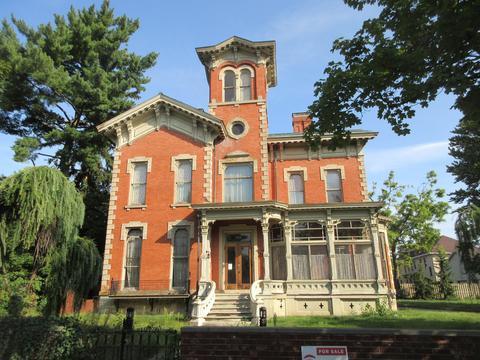

Here’s an unusual and fairly priced Victorian in Kalamazoo, Michigan. ($445.5K) It just makes me feel slightly uneasy, though.

The hall is kind of dark and gloomy. Needs some sprucing up.

I must say that the architectural details on the ceiling are impressive.

Wood features and fireplaces are intact.

Interesting niches for statues in this room.

Very original butler’s pantry.

The kitchen is nice, but sticks out like a sore thumb.

One thing I love about this house is the originality of the baths. Look at the Victorina water closet.

The servant stairs outside the kitchen.

This is unusual- a full-size fireplace in the upstairs hall.


This bedroom has a closet with a cupboard running the length of the wall, although I think it was a later addition.

The first of the vintage baths. This is the right way to update a Victorian.

I don’t know that I would’ve painted this bedroom trim gold, but okay.

Another cool tub- isn’t it unusual?

The sink & medicine chest are beautifully vintage.

Pink bdm. and a purple hall. Very colorful.

This is the best bath- look at the original Victorian shower.


The next 2 bdms have original marble sinks- love this pink one. Isn’t the original plug amazing?


And this one has a matching blue one. Needs new faucets, though.

Actually, there’s potential in the basement- love the arched doorways.
https://www.redfin.com/MI/Kalamazoo/530-W-South-St-49007/home/96240046
251 notes
·
View notes
Note
Hello again! Could I request names for Ei from Genshin Impact? Like elegant, dark names preferably. Thank you so much!
Sure thing!
⚡️Raiden Ei name suggestions:
amadora , anastasia , andromeda , apollonia , arabella , demetria , desdemona , donatella , eleanor , euphemia , genevieve , ida , imogen , larissa , marceline , narcissa , nerissa , philomena , quintessa , therese , victorina , wisteria
Enjoy!
#sunrays#sunrise#labygate#reid#liom#actually mogai#mogai#xenogender#name suggestions#name list#trans#genshin impact#raiden shogun#ei#baal#fictive#introject#kin#fictionkin#help
31 notes
·
View notes
Text
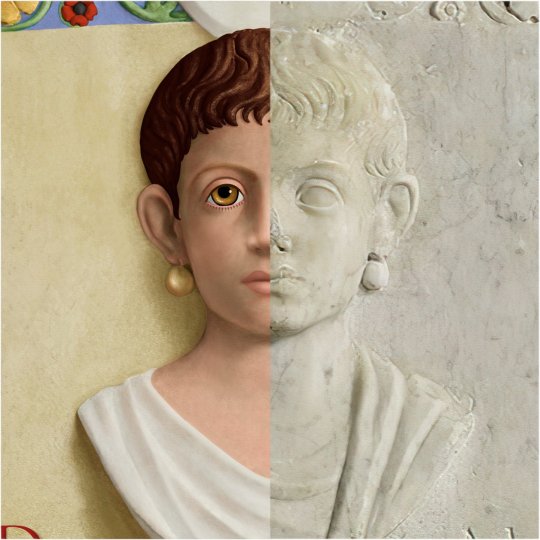
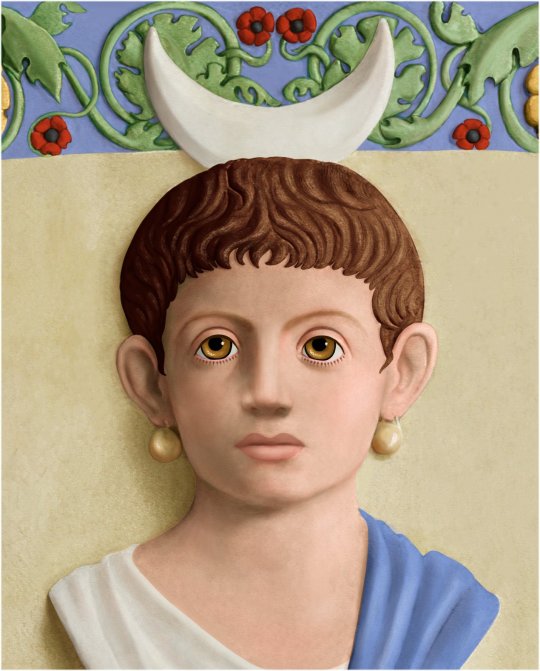

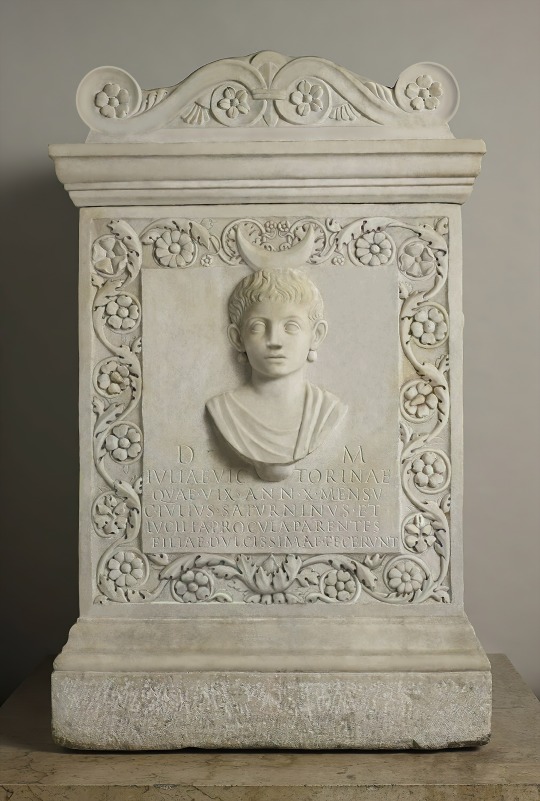
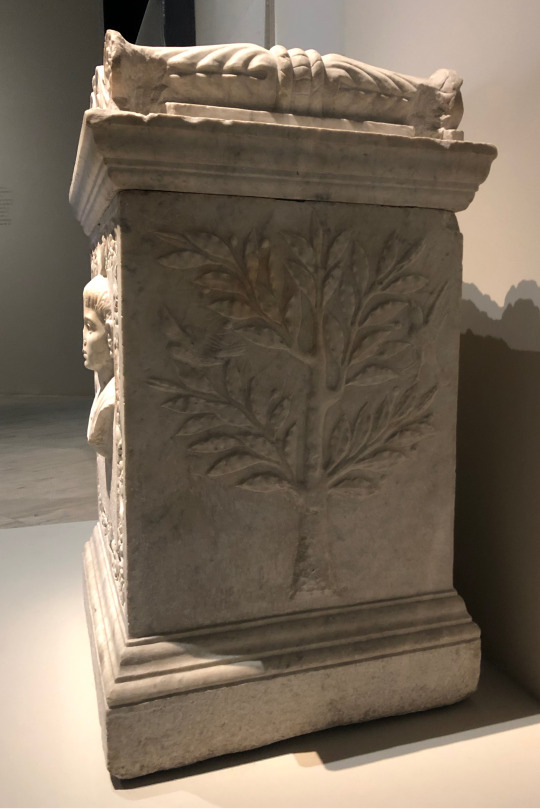
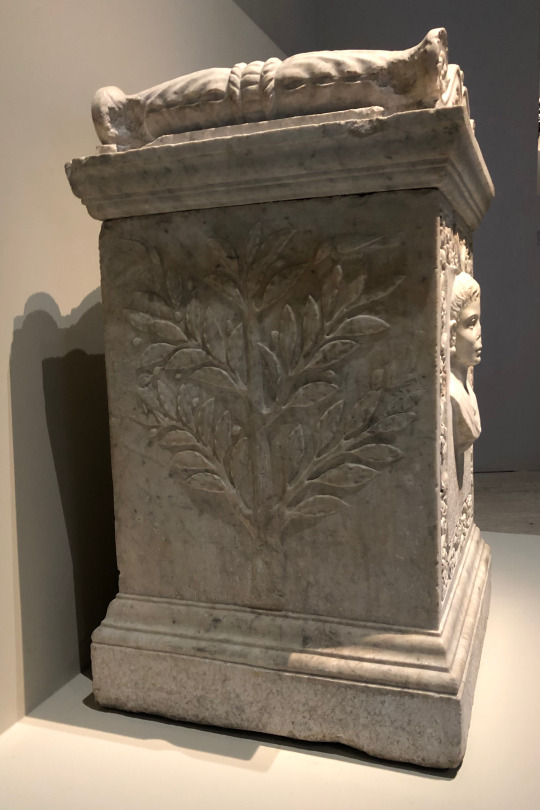
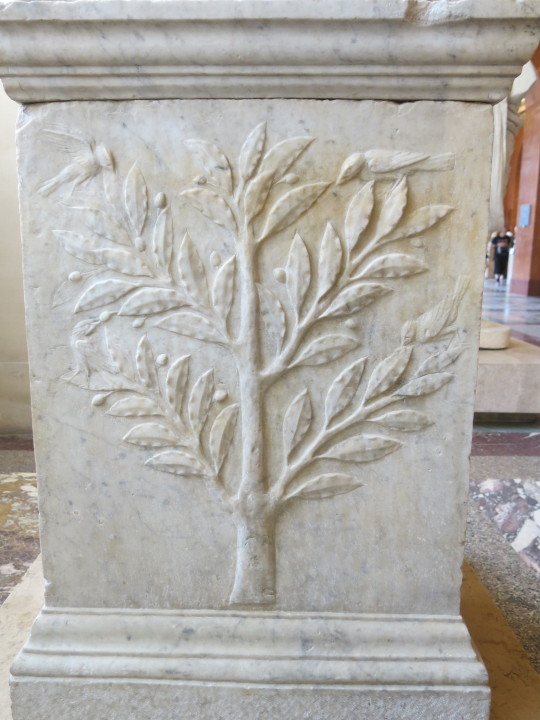

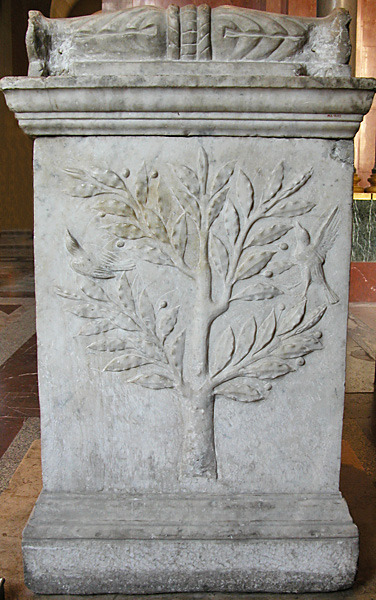
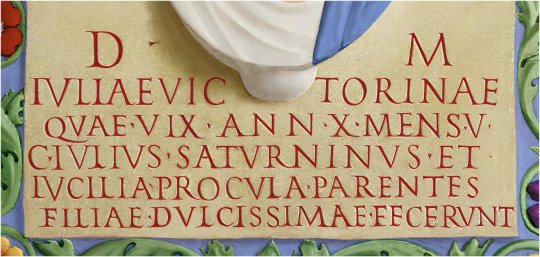
"Funerary altar of Iulia Victorina. Marble. Last quarter of the 1st century CE. The altar is dedicated to the en:manes of Iulia Victorina dead at 10 years and 5 months old. Purchase 1863. Louvre museum (Paris, France). Portrait on the front of the 10 year old girl at her death, garlanded in a floral frame, and on the back as the young matrona she would never become. Trees on each (side). Color by @chapps on twitter.
While Julia Victorina is only one child in the unhappy statistic that half of all Roman children died by the age of ten, her death in the last quarter of the 1st century CE is personalized by the unique and costly monument her parents set up in her memory. With this elegant altar, now in the Louvre Museum in Paris, Gaius Julius Saturninus and Lucilia Procula, who are otherwise unknown by rank, ancestry, or situation, memorialized their grief and hopes for a young daughter taken from them prematurely. The monument would have been placed in a family tomb and held a cinerary urn containing the child's ashes. It is a rectangular block of white marble, elaborately carved on all four sides and crowned by a marble cover gracefully decorated with motifs (mouldings, volutes, and blossoms) that echo those carved on the front and back of the lower stone. The front of the altar bears the dedicatory inscription and features a portrait bust in high relief of the lovely face of a girl, framed by a wide border of acanthus leaves and variegated flowers, symbols in the Mediterranean world of eternal life. Julia Victorina, gazing pensively off to her right, wears ball-shaped pendent earrings, probably of gold; her shoulders are draped, her hair is styled almost boyishly and is crowned by a crescent moon, at once a symbol of eternity and association with Diana in her role as the moon-Goddess. On the back of the altar she appears again, similarly framed with botanicals, but now as a young matrona, as her parents had hoped in a few years to enjoy her; her face is solemn and thinner but recognizable as the child she was. She looks directly at the viewer, wearing the married woman's stola, a palla draped over one shoulder and the same pendent earrings; her hair is arranged in a more matronly style, topped by a radiate crown that symbolizes her apotheosis in the heavens and her immortality. The short sides of the altar are decorated with a flourishing laurel tree, an evergreen sacred to Apollo, God of the sun; within its branches hover two birds, possibly ravens, his sacred bird, seen here together with laurel-crowned Apollo in his shrine. This extraordinary altar, with its portrait busts and floral designs promising immortality, offers moving testimony to the grief of Victorina's parents over the loss of a beloved child.
The dedicatory inscription is crowded into the space below the child’s bust, which awkwardly divides the girl's cognomen. The words are written in square capitals over five lines of diminishing size, with prominence given to the Di Manes and the girl's name. The letters are well formed and centered, with medial dots (interpuncts) separating the words in lines 3-6.
Latin:
D[is] M[anibus]
IVLIAE VIC TORINAE
QVAE• VIX[it]• ANN[is] • X• MENS[ibus]• V•
C[aius]• IVLIVS• SATVRNINVS• ET
LVCILIA• PROCVLA• PARENTES
FILIAE• DVLCISSIMAE• FECERVNT
English:
To the spirits of the dead
Julia Victorina
Who lived for ten years and five months
Gaius Julius Saturninus and
Lucilia Procula
Parents of this sweetest daughter
Had this monument made
Notes to Funerary Inscription for Victorina:
Di Manes, m. pl.
the collective spirits of the dead, the divine spirits. DM is a common abbreviation for the dedication of a funerary monument to the spirits of the dead and thus is in the dative case. These letters or the words they stand for are regularly found at the head of funerary inscriptions dating from the end of the 1st century BCE through the 2nd century CE.
Iulia, -ae f.
Julia is the proper name of women born into the gens Iulia. Victorina appears to have inherited the nomen gentilicium from her father. The name of the deceased is either in the dative case as the dedicatee of the inscription, or the genitive as the possessor of the DM.
Victorina, -ae f.
The dead girl's cognomen.
menses, menses m.
month. Both annis and mensibus are ablatives of time following vixit. Some inscriptions included days as well.
Saturninus, -i m.
The cognomen of Victorina's father is found during the Republic and the Empire. There was a centurian named Gaius Iulius Saturninus who came from Chios and served under the Flavians in a unit of Spaniards in Egypt, but no firm connection can be made.
Lucilia, -ae f.
Lucilia is the proper name of women born into the gens Lucilia; Victorina's mother's cognomen is Procula.
parens, -entis m./f.
parent. It is in the nominative plural, in apposition with Saturninus and Procula, who are the subjects of the verb fecerunt.
dulcis, -e
sweet, lovely, dear, kind. The adjective is in the superlative degree. It modifies filiae; both are in the dative case, in apposition with Iuliae Victorinae.
[hoc monumentum]
this phrase normally follows the verb of dedication (fecit/fecerunt) in funerary inscriptions. Monumentum is the regular word for a Roman tombstone. Sometimes the entire formula is omitted as unnecessary or for lack of space or money."
-taken from feminaeromanae, vroma, and wikipedia
More pictures and sources on my blog: https://paganimagevault.blogspot.com/2022/05/funerary-altar-of-iulia-victorina-1st-c.html
#ancient rome#roman statue#pagan#paganism#apollo#artemis#funerary art#european art#roman art#ancient art#italy#archaeology#reconstruction#art#ancient history#art history#1st century
350 notes
·
View notes
Text
Victorina.
7 notes
·
View notes
